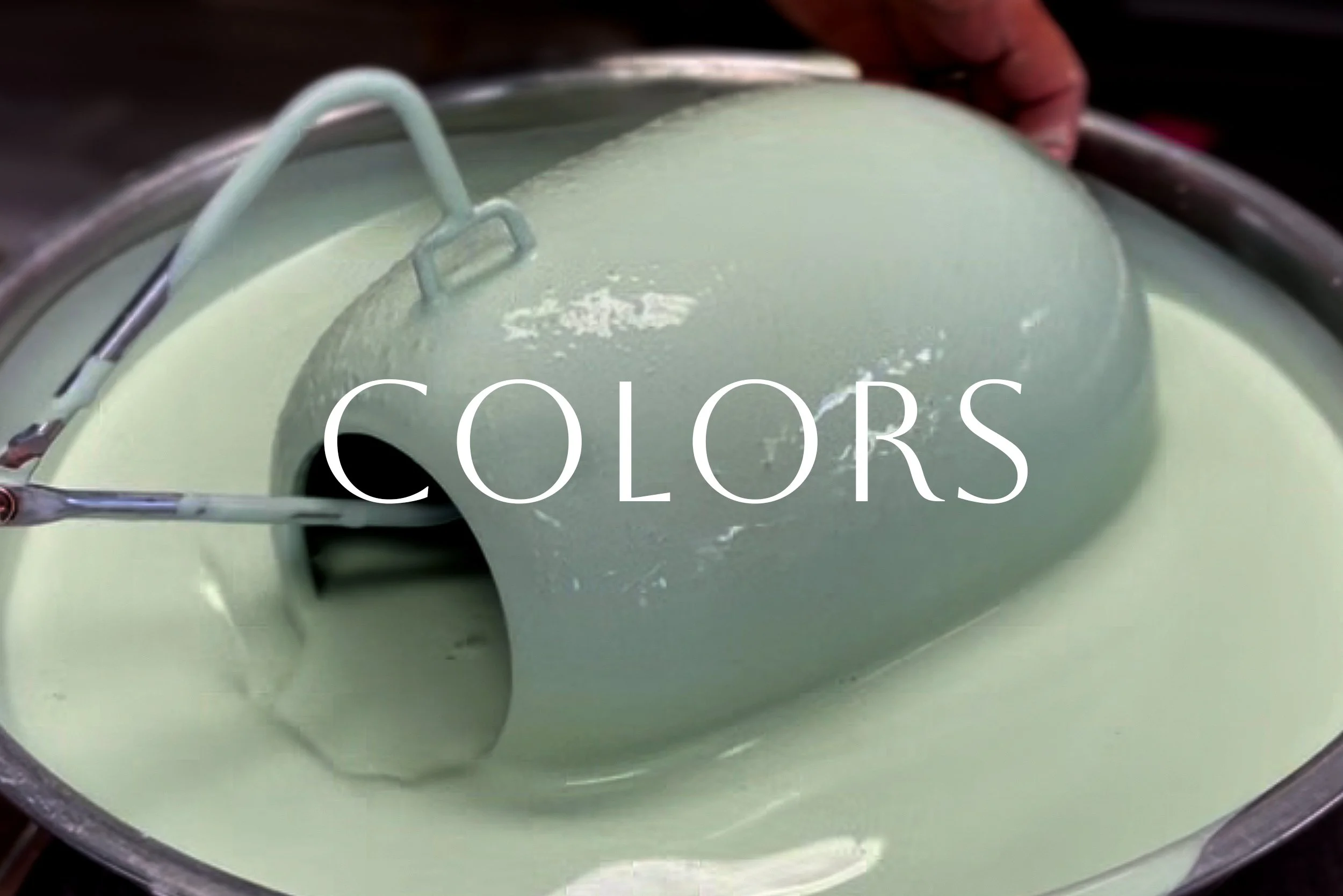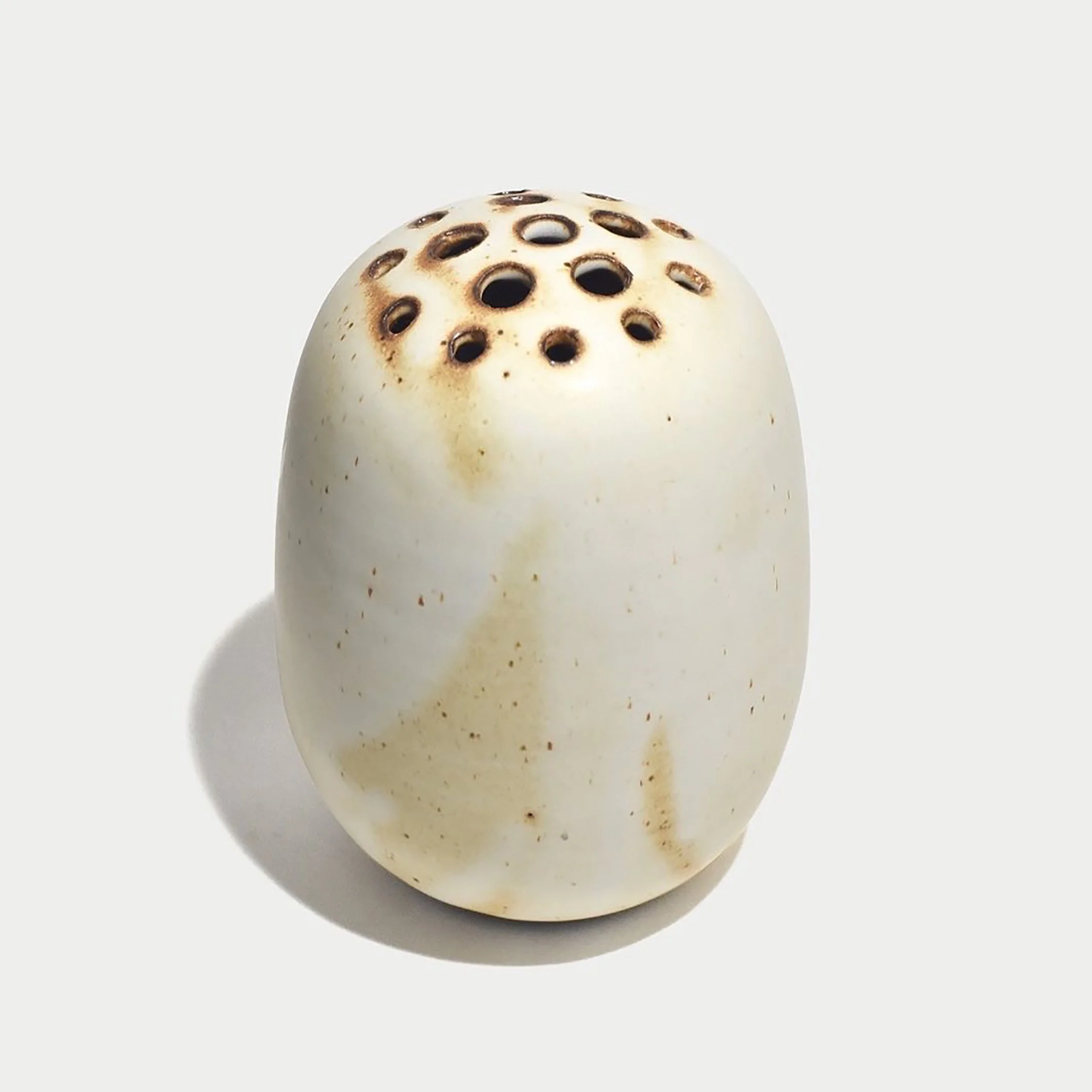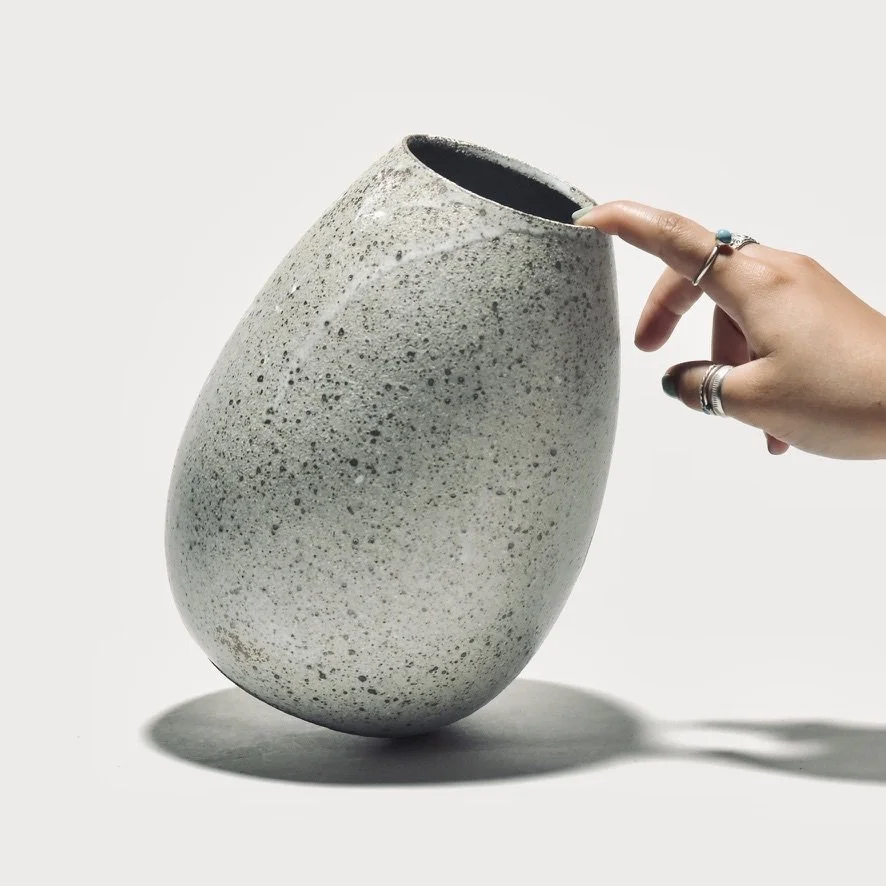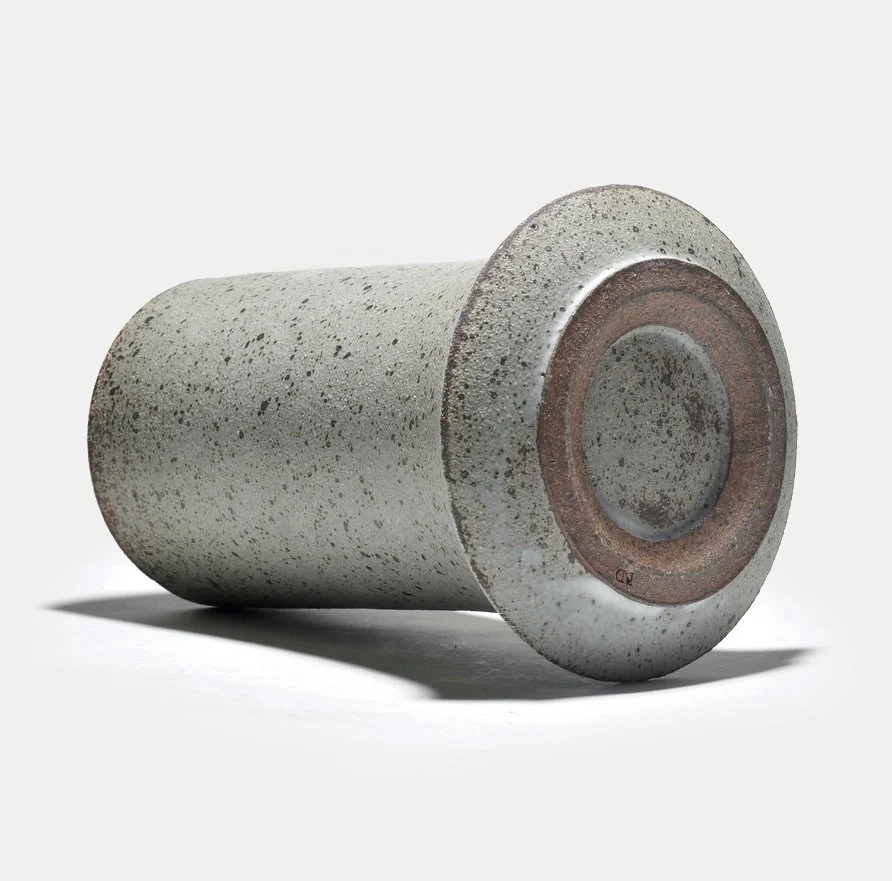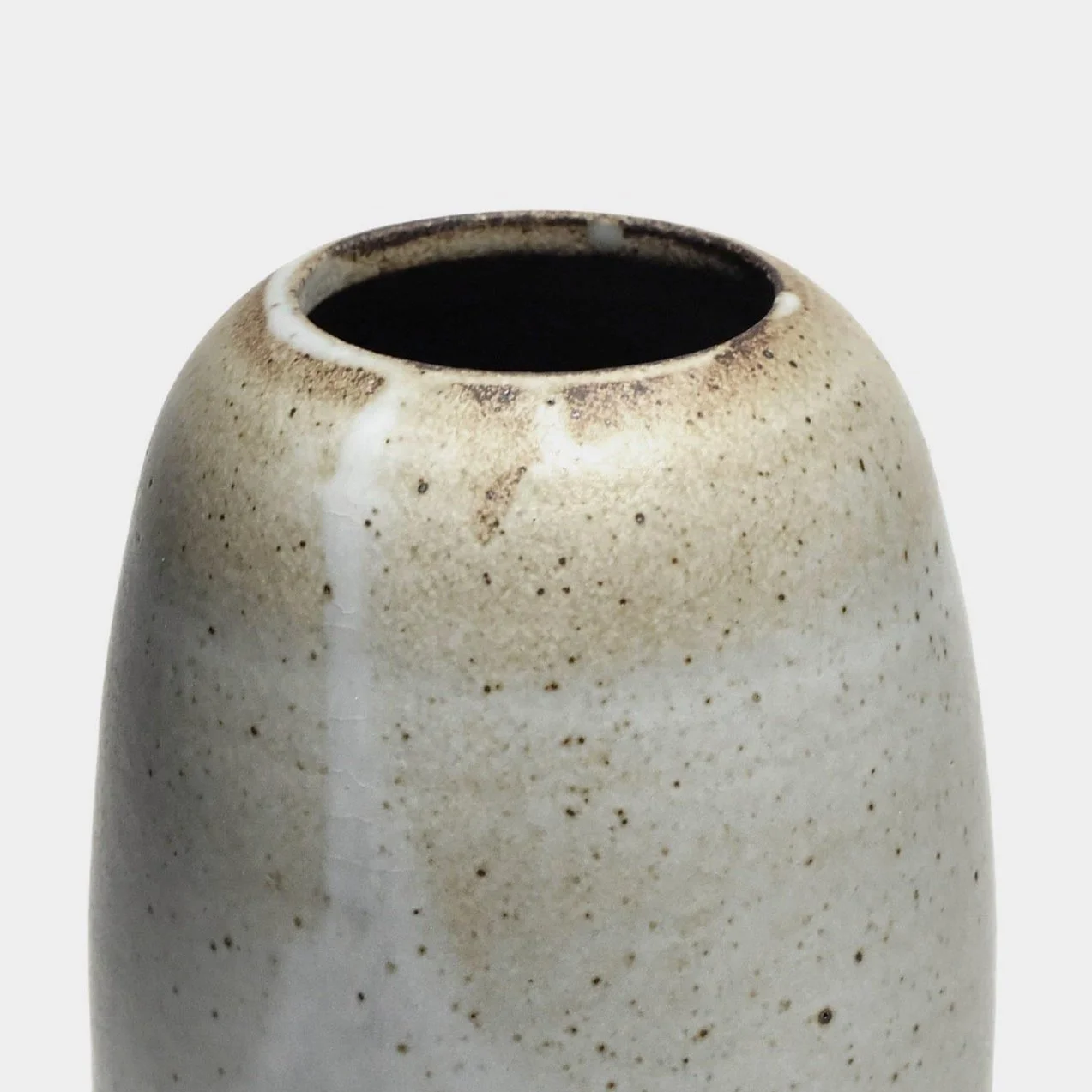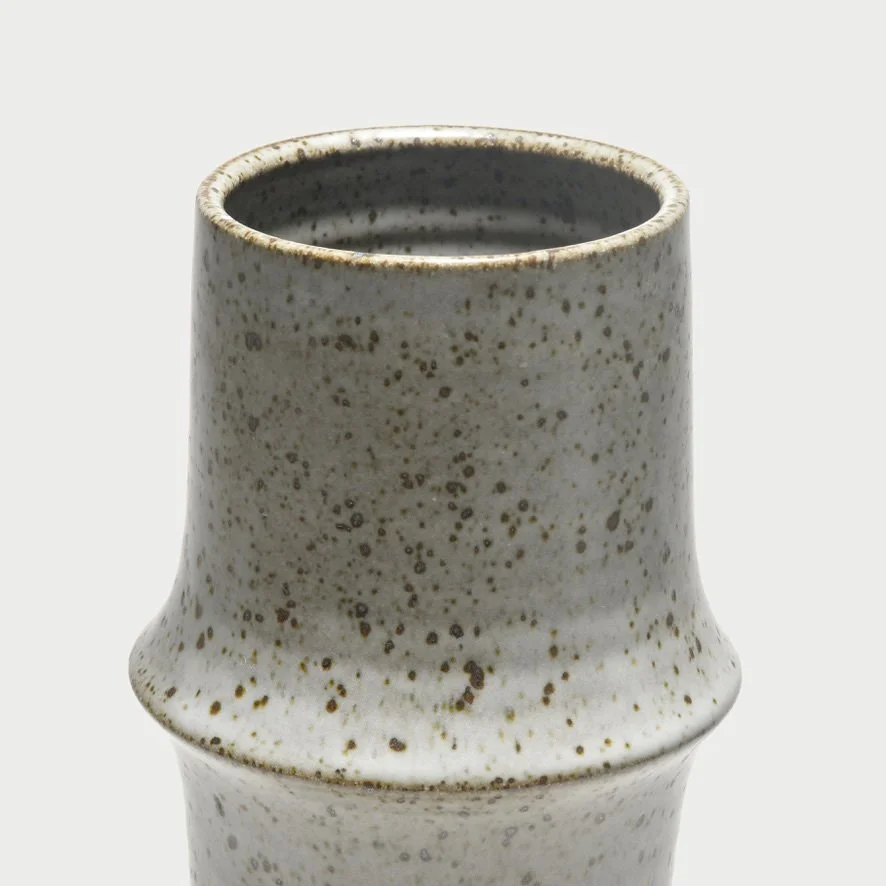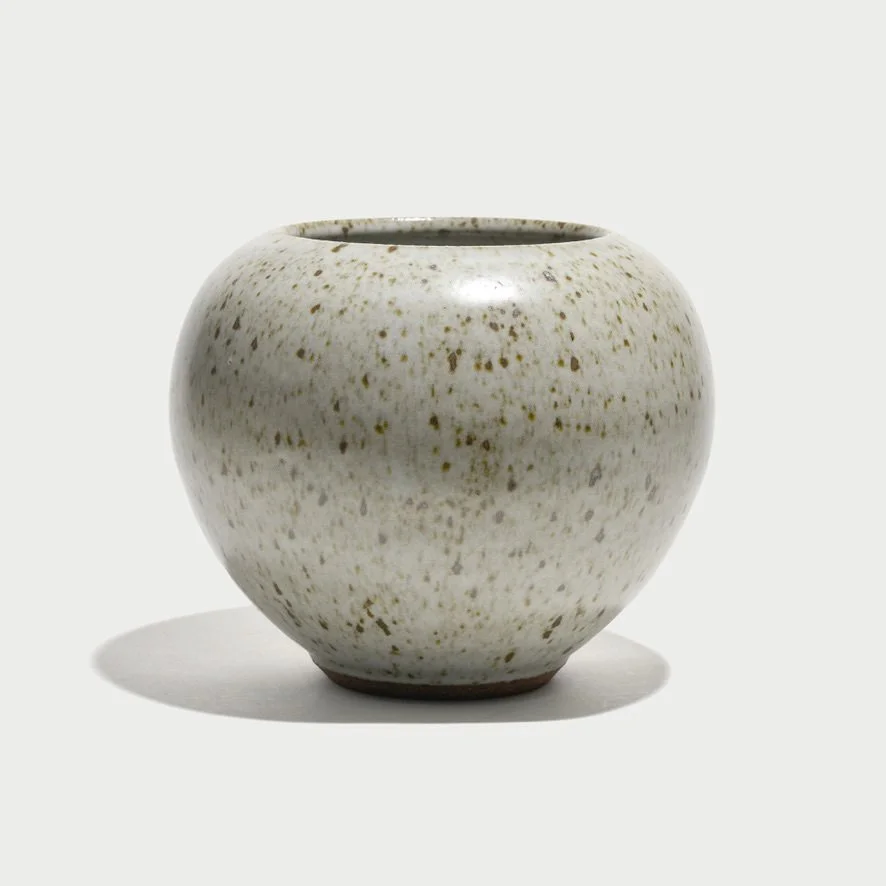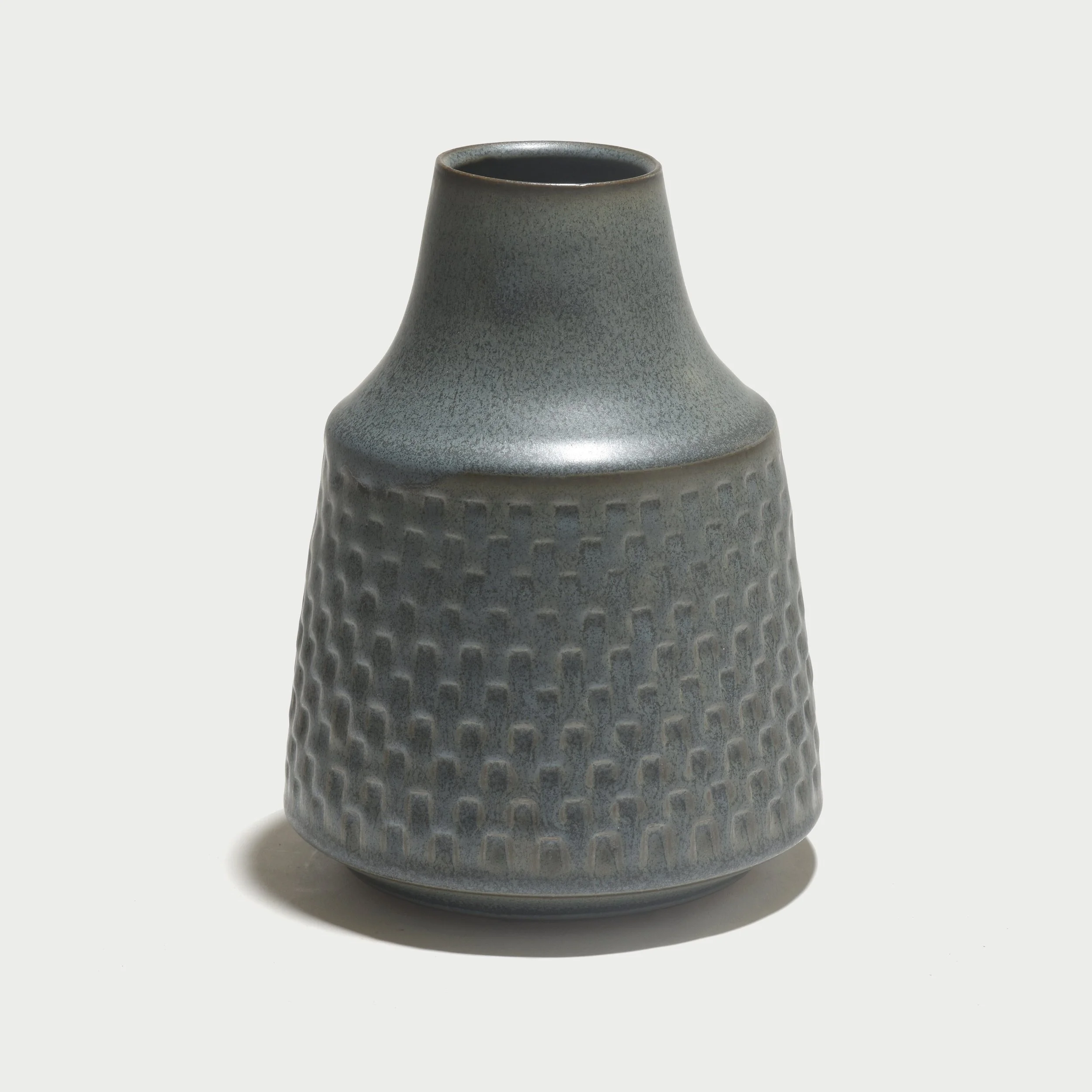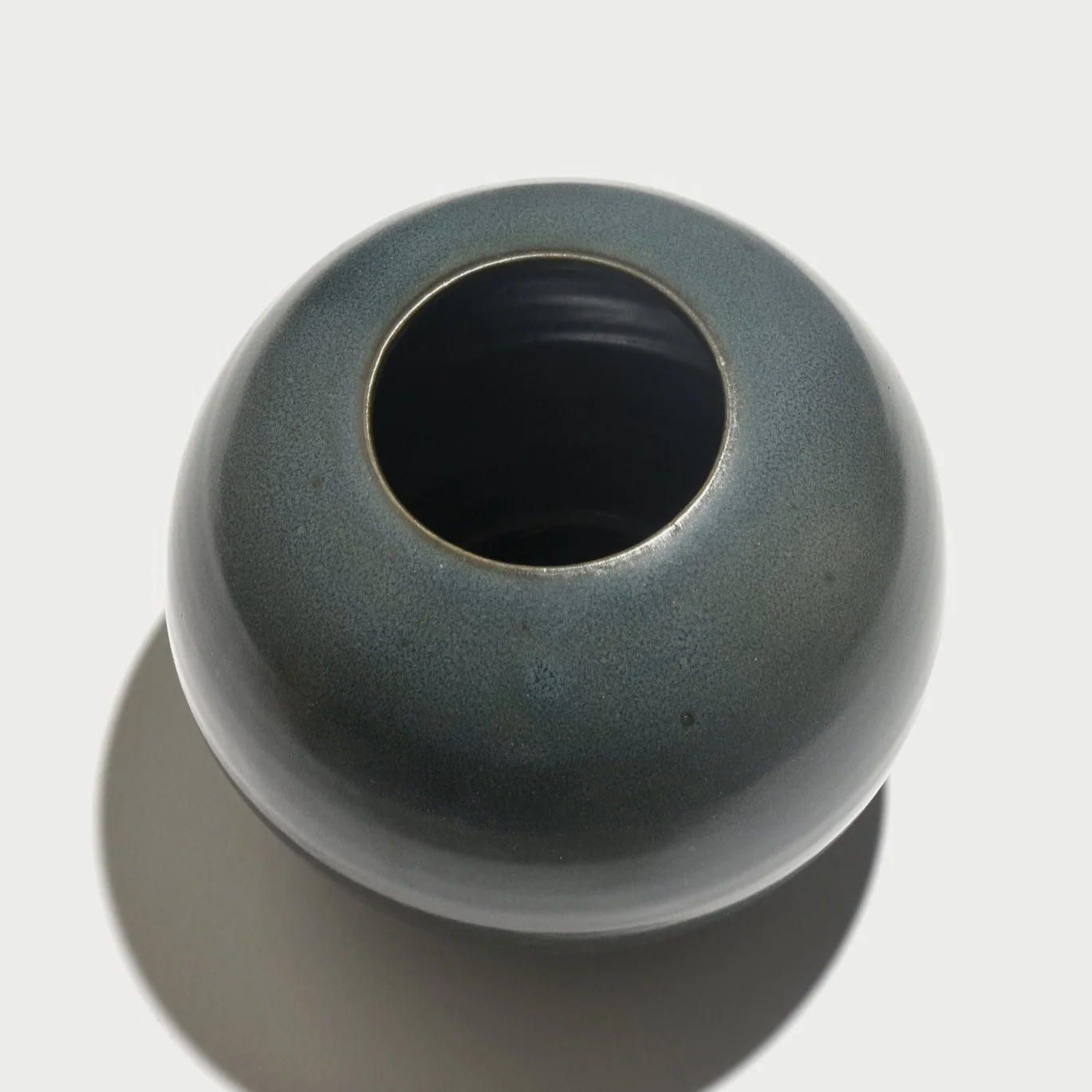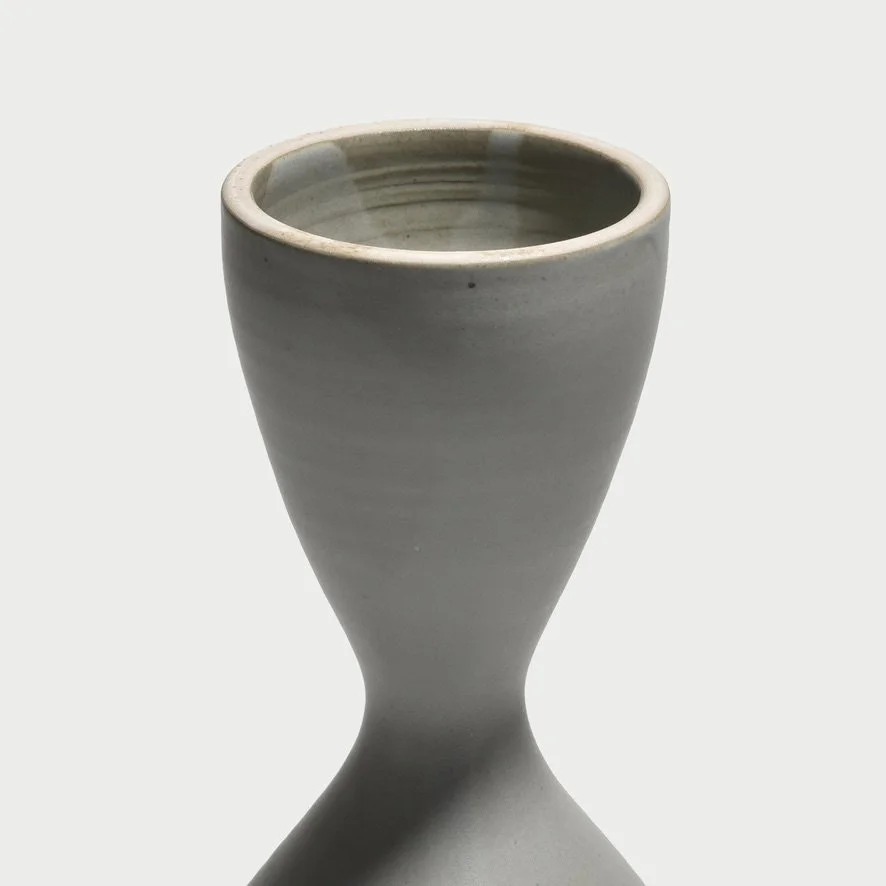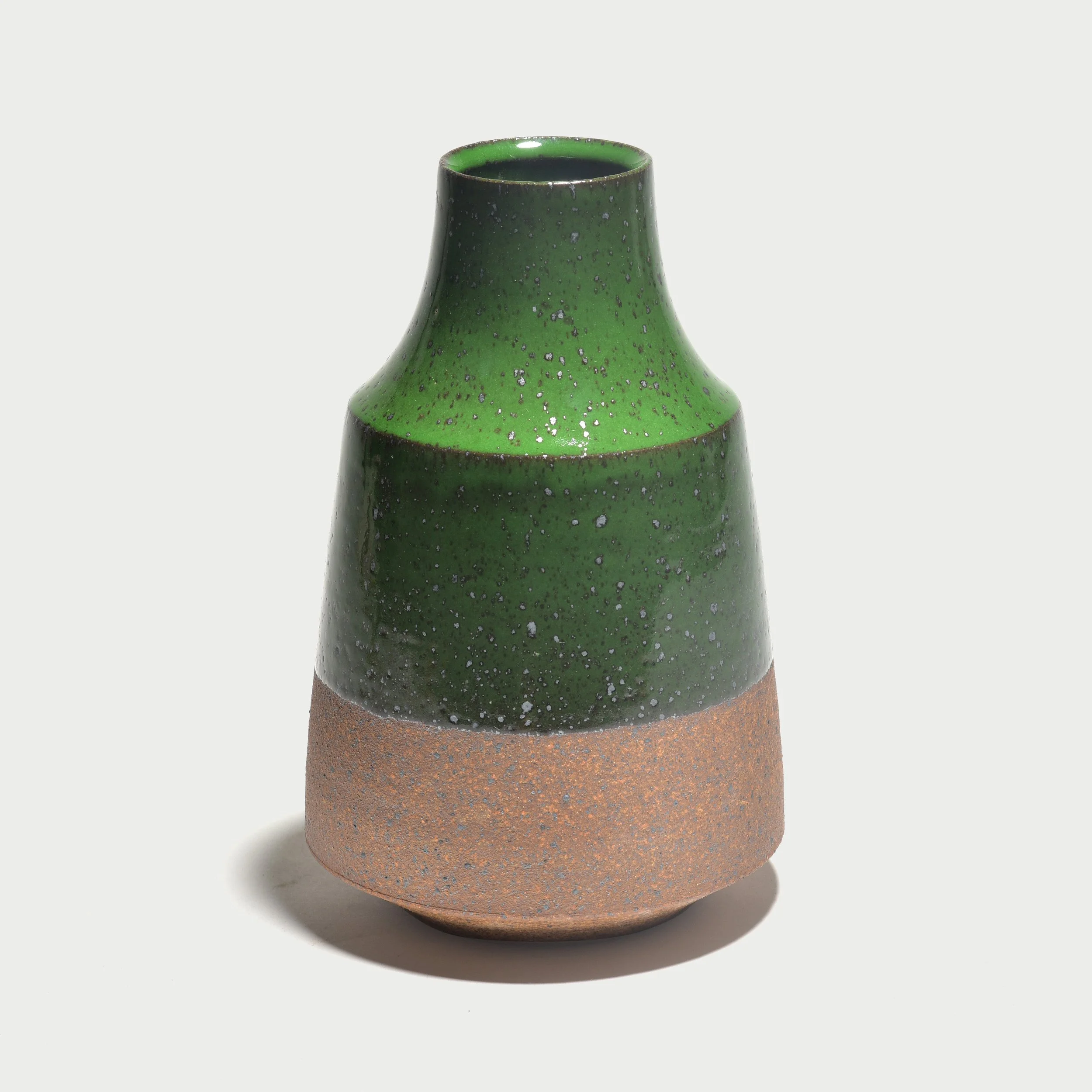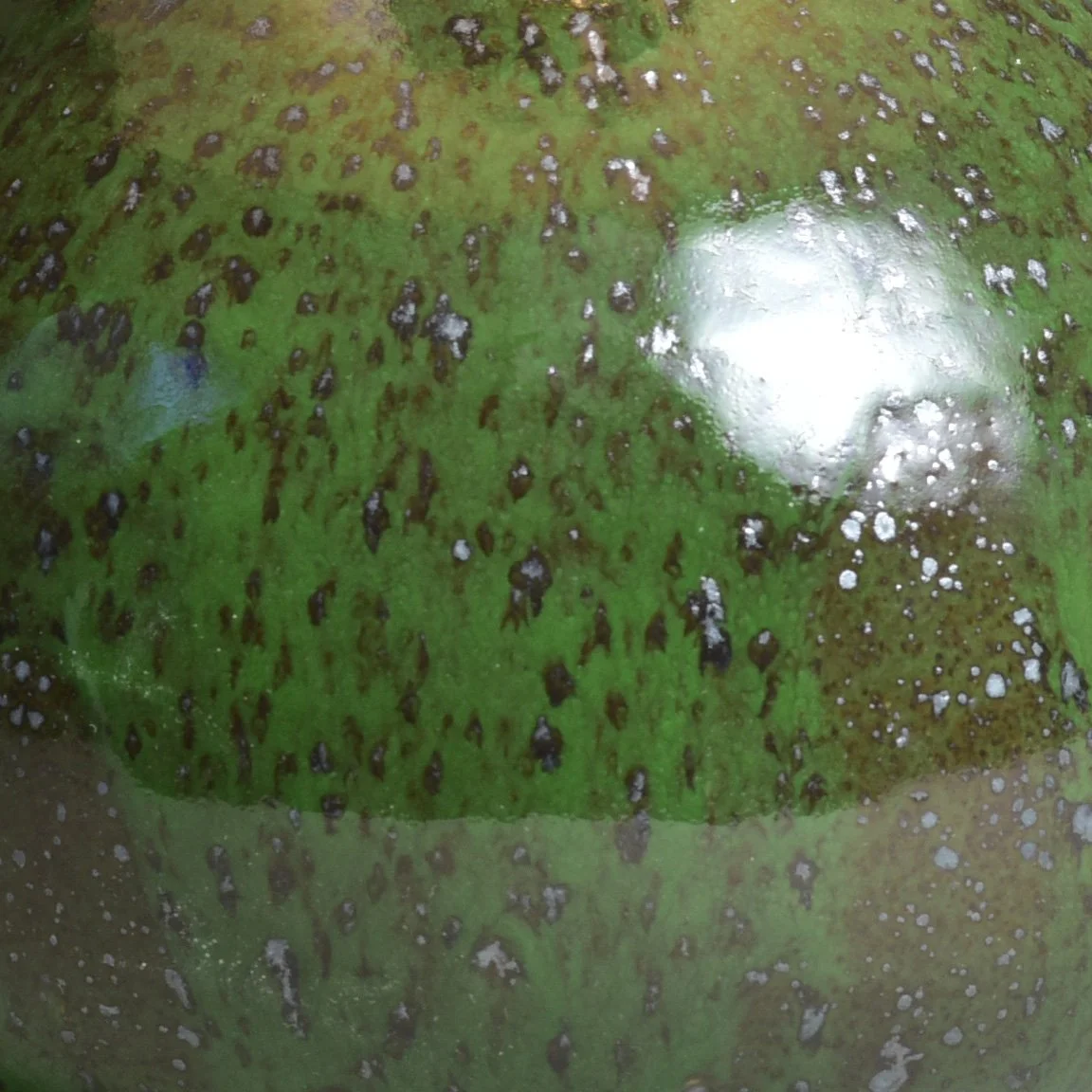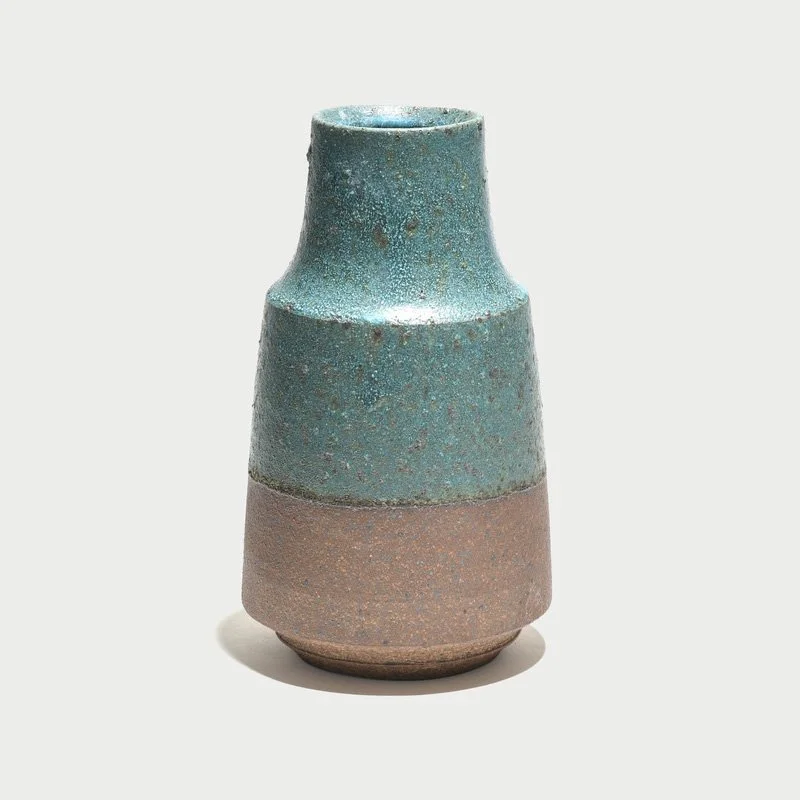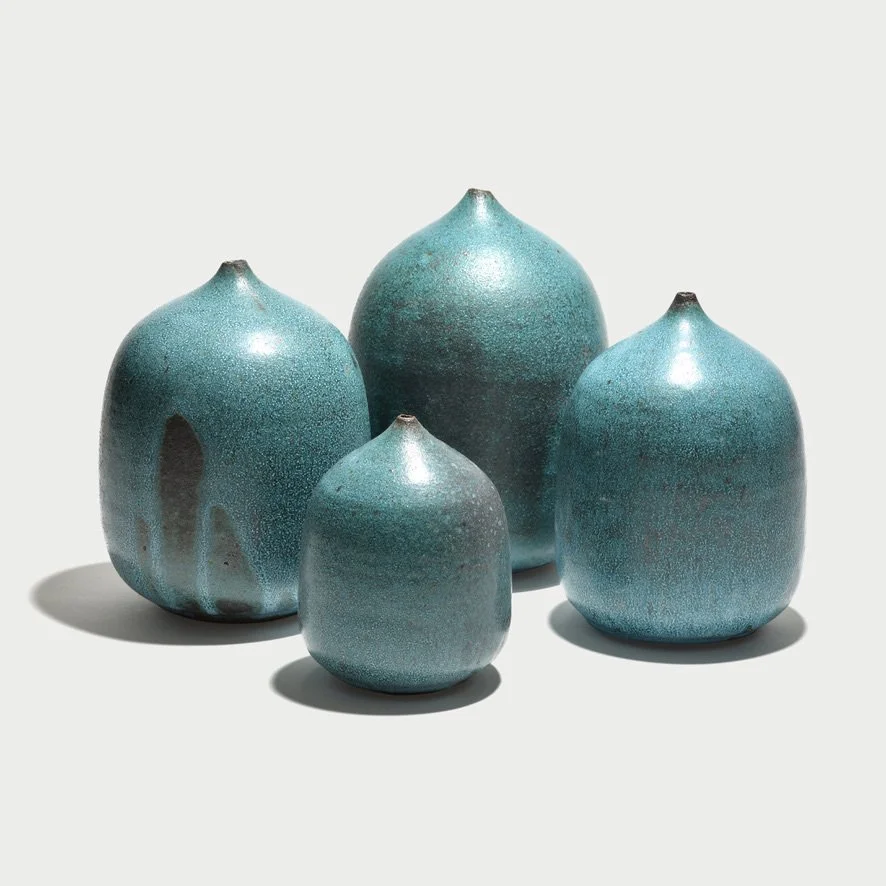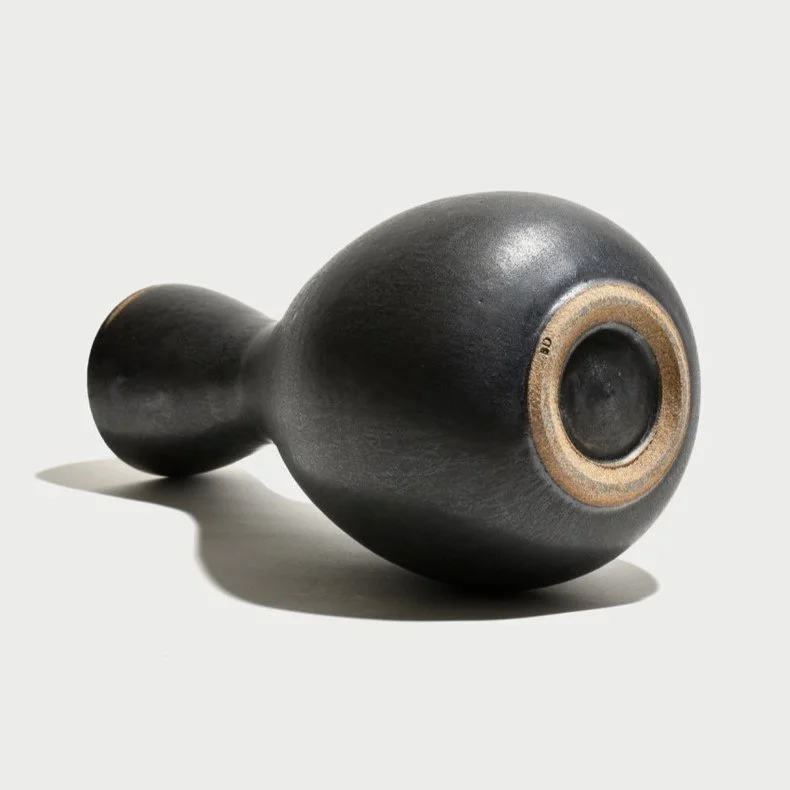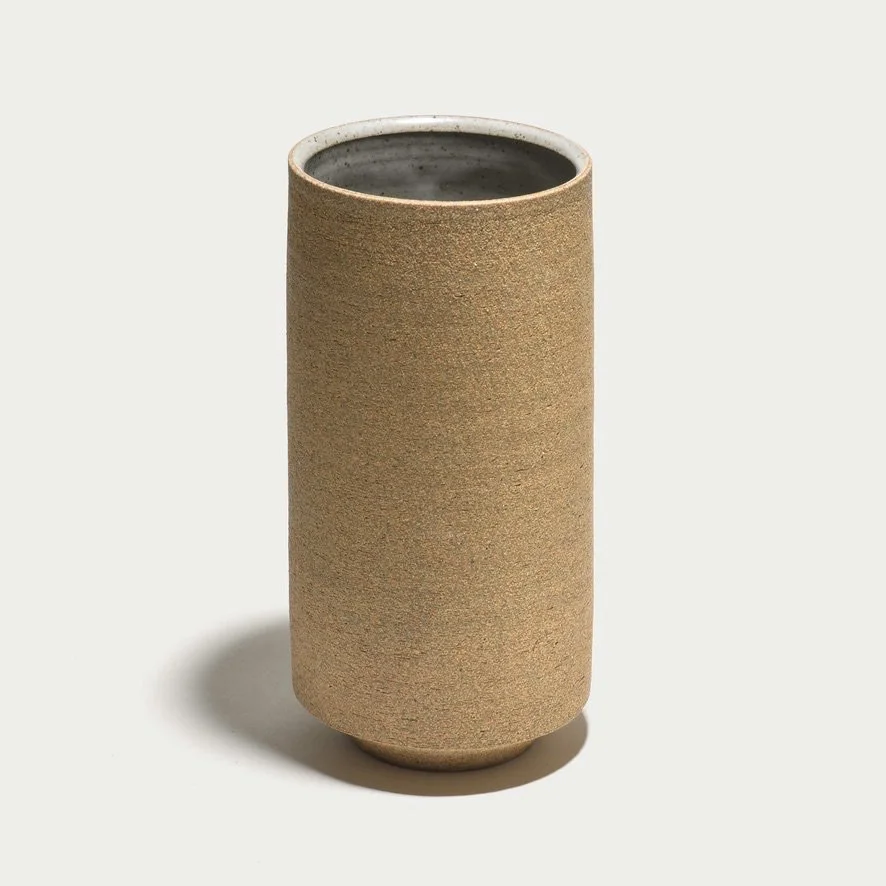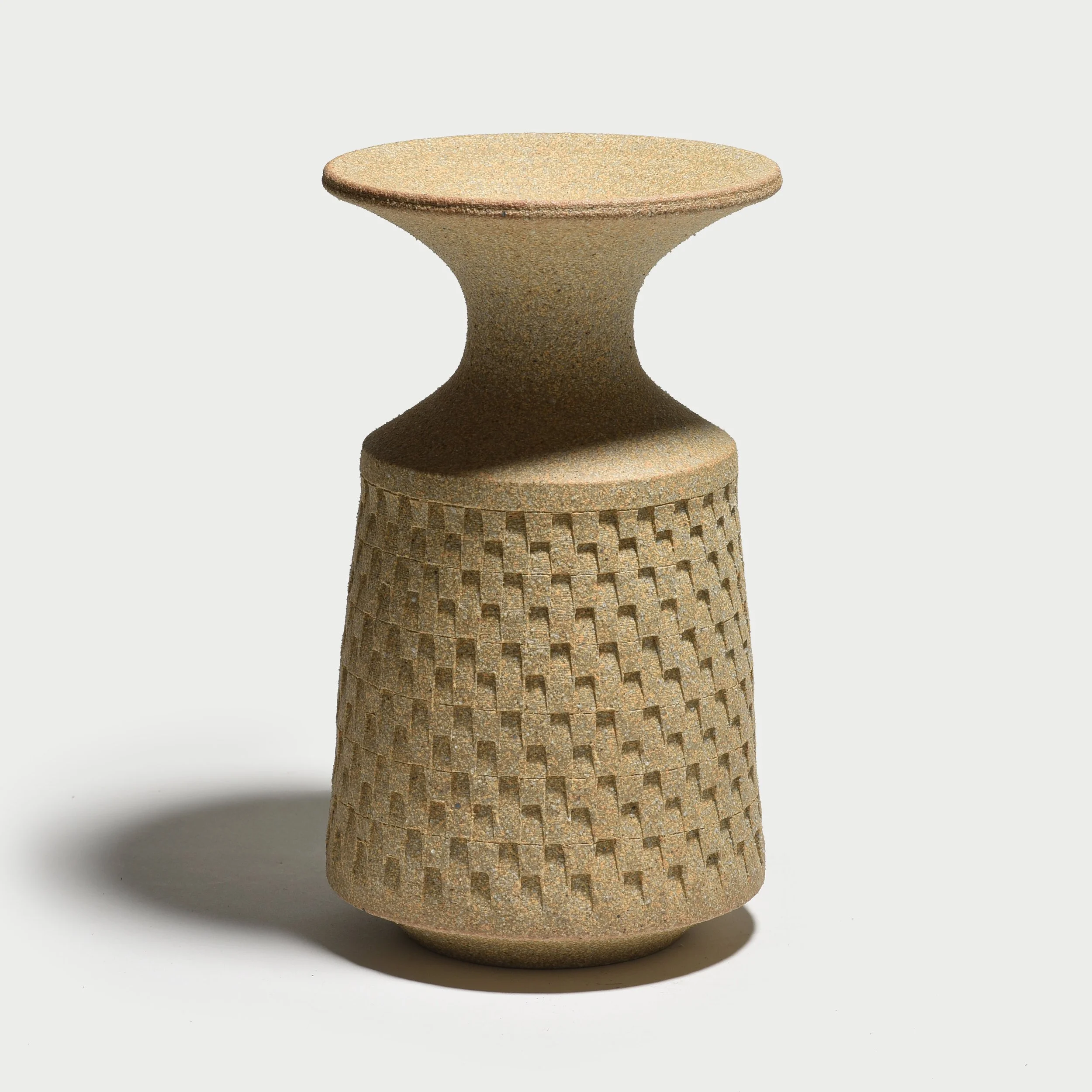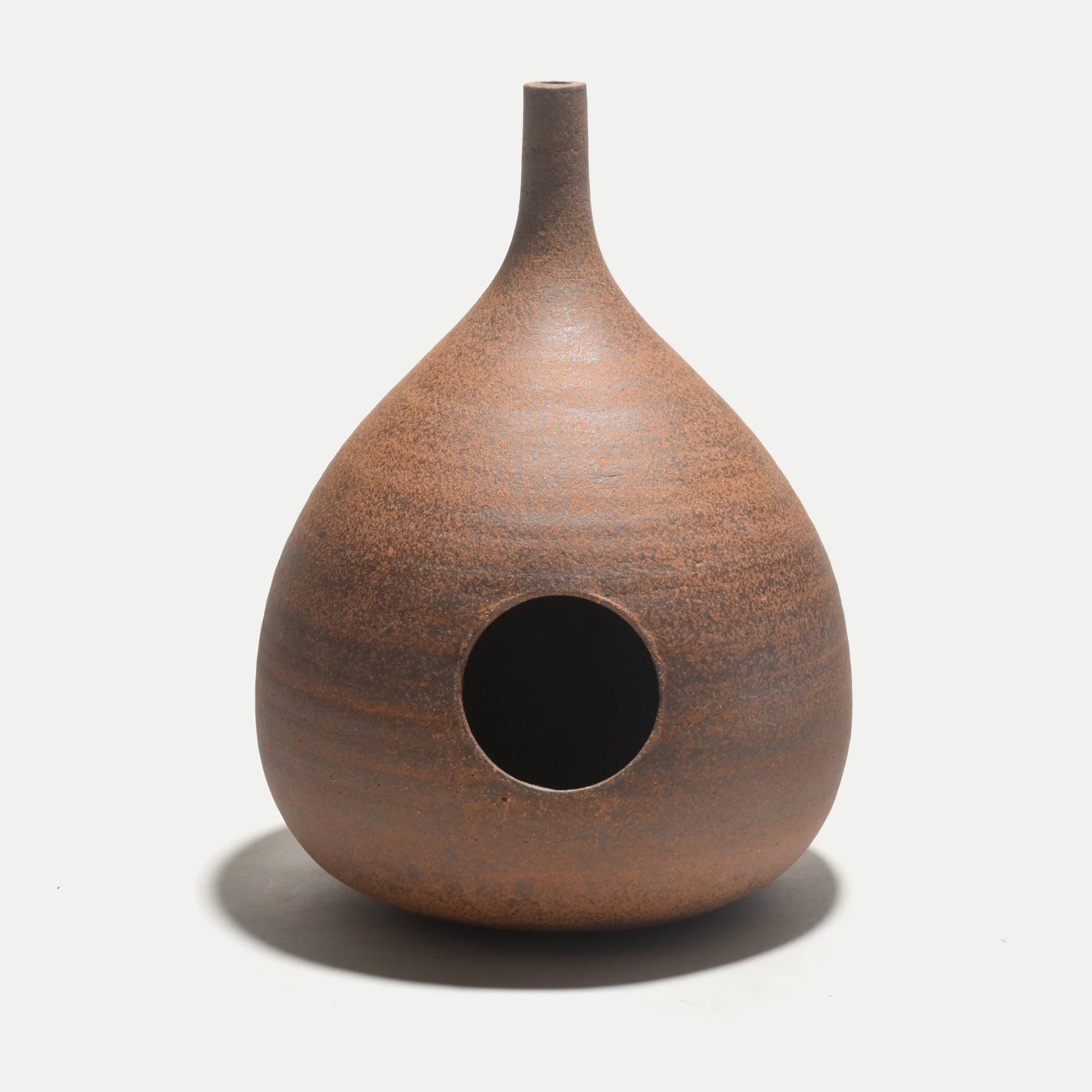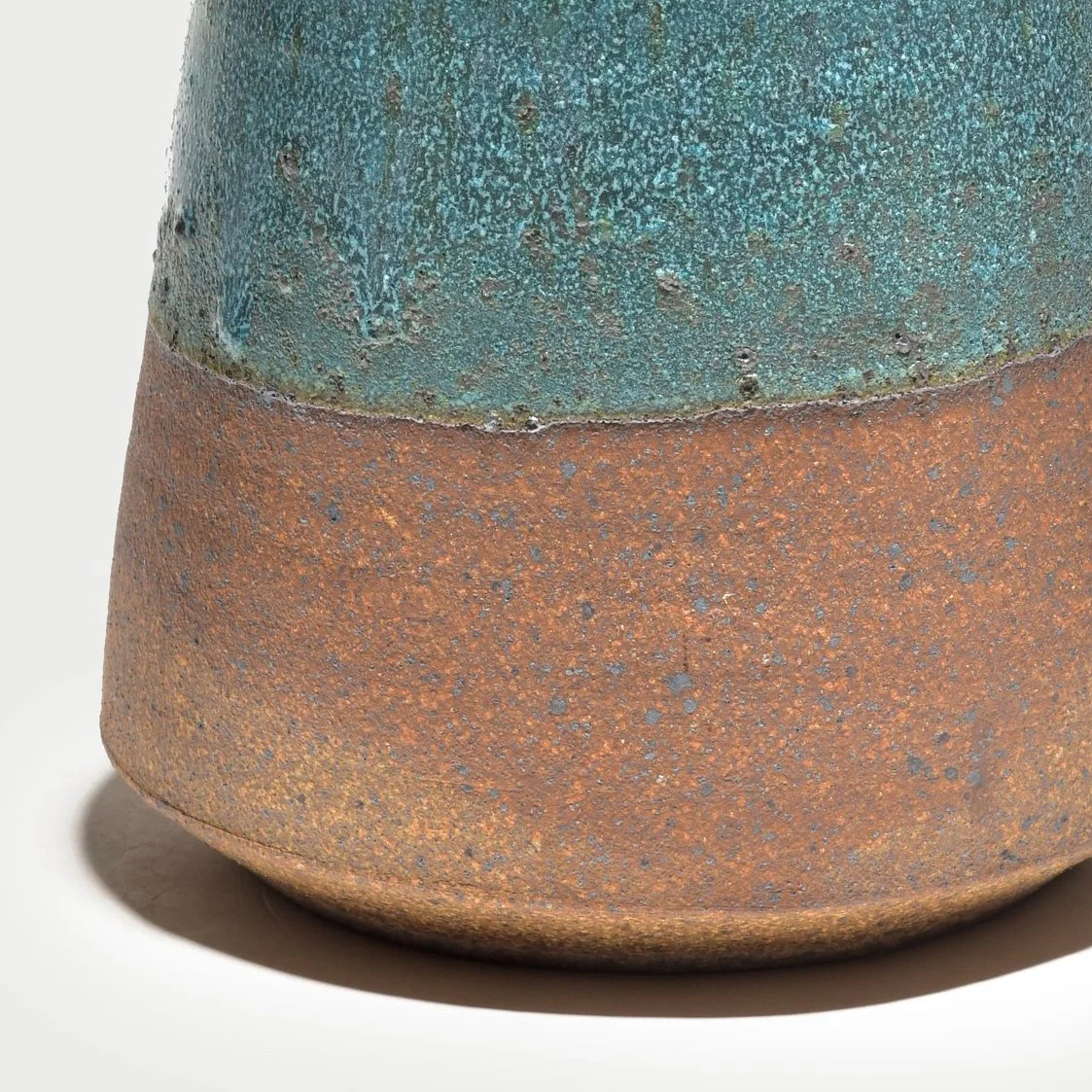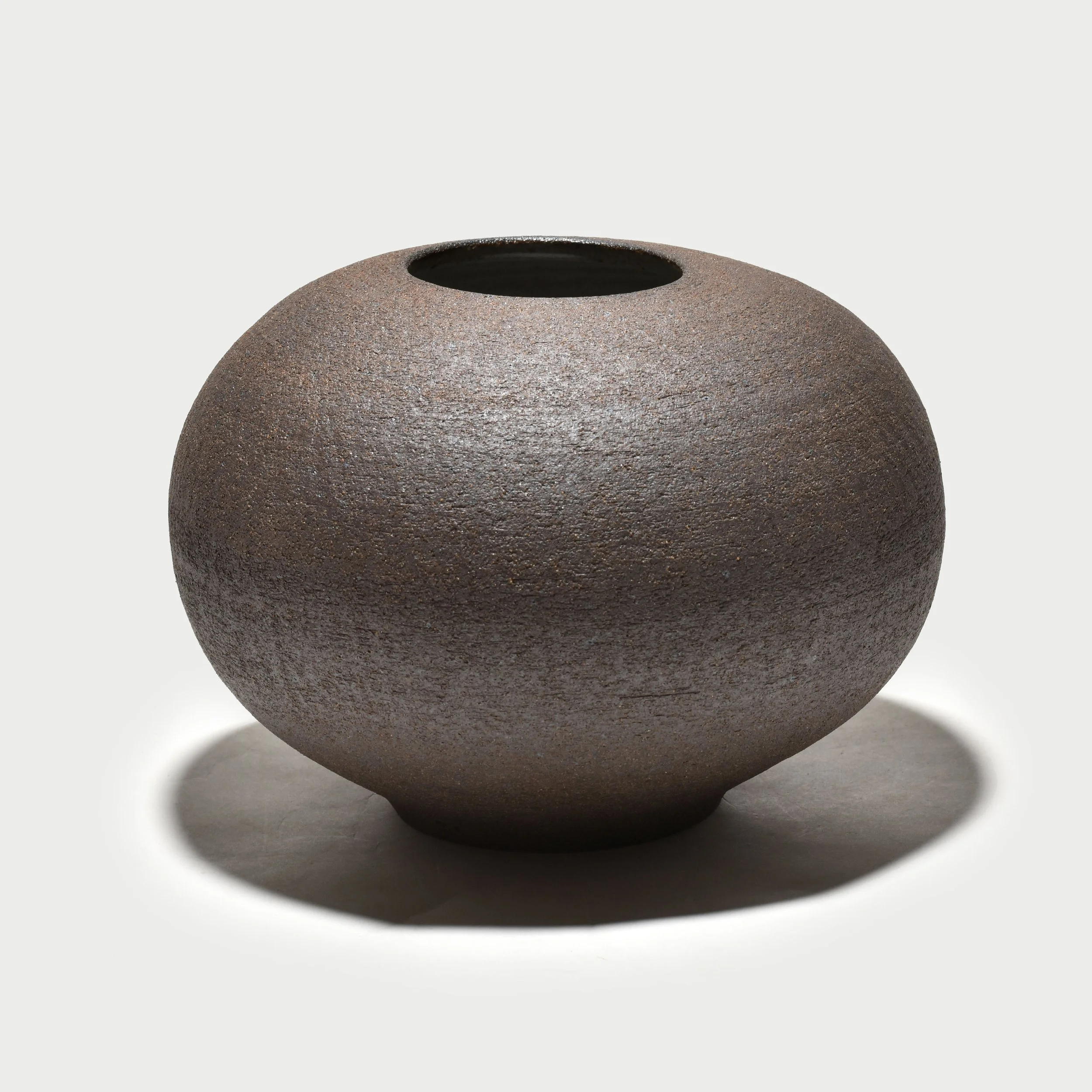All glazes are custom mixed from dry materials. Formulated for high-fire gas reduction kilns (2300°F), these glazes don’t coat the piece like paint, but, instead, fuse to the clay, creating beautiful surfaces unique to this process. In addition to fully glazed vases, there is an unglazed palette that highlights the natural beauty of 4 clays.
EGGSHELL
This glaze has a velvety finish and great variation in tone depending on application thickness and type of clay underneath. Expect a color range from off-white to parchment to a darker khaki on rims and edges. A variation on Eggshell is Quail which adds speckles because of iron in the clay.
GRANITE
This is a matte, speckled glaze that creates a range of light gray/blue tones. Based on the application of the glaze, areas that are slightly thicker (like a drip) tend to be lighter. Darker areas are where the glaze is thinner — sometimes created by the glaze “running away” from rims and edges to reveal dark stoneware underneath.
PEBBLE
Pebble is variation on the Granite glaze with less speckles and fires to a cool gray/blue tone. Depending on the application of the glaze, the color can include areas of olive or tan, along with rims and edges showing the dark clay underneath.
BIRCH WHITE
This versatile satin glaze has a speckled finish that’s beautiful on vase shapes. The amount of speckles will vary depending on the clay used, the glaze application, and the firing atmosphere — yet when seen together, pieces in Birch definitely appear as a family.
QUAIL
Quail is a new glaze that combines a speckled look with a cream-colored surface. Like Birch White, Quail gets its speckles not from a material in the glaze, but from iron in the clay. This effect — pulling iron from the clay into the glaze — is a result of the high-fire, reduction atmosphere in the kiln.
DARK WATER
Dark Water is a beautiful blue/gray with a subtle “hare’s fur” pattern detail. The surface is usually semi-gloss (but can be matte depending on the firing) and breaks to a toasty brown on rims and edges of pieces.
GRAY MATTER
Gray Matter looks like a quiet finish from a distance but has some wonderful tones up close depending on the glaze application. Thicker areas from drips and thinner spots that received less glaze add a range of color from light gray to warmer brown tones.
ARTIFICIAL TURF
Artificial Turf is a beautiful contrast to the collection because of its saturated color and glossy finish. Yet, with a speckled surface, it feels nuanced and detailed. When half-dipped on a Step or Cylinder vase, the glossy surface is highlighted against the unglazed Almond clay.
LAGOON
Lagoon is beautiful and unique. It has an electric blue/green color, but is the only glaze in the collection that isn’t food safe. It is used for decorative pieces only. The surface can have a slightly volcanic look, depending on the clay used.
MATTE BLACK
An almost velvety black that forms a dramatic background for food or an arrangement of flowers. Sometimes showing metallic-looking flecks, this glaze is perfect for highlighting a range of silhouettes in a grouping.
OATMEAL
Oatmeal is a the lightest of the 4 clays in the unglazed palette and has a wonderful warm off-white to cream-colored look.
SAND
Sand might be the most versatile of the unglazed clays — its warm tone and texture are pleasing in any context. Sand looks beautiful left plain or stamped with the Flathead pattern. If glazed in white on the inside, its modest iron content produces a discreet speckle detail.
ALMOND
In between Sand and Espresso, Almond has a wonderful rich tone because of its high iron content. The same iron is also what creates the speckled surface in Birch White and Quail. — the iron migrates to the surface during the firing process. With Lagoon it produces and almost volcanic texture.
ESPRESSO
Espresso, like Stone, can be finished smooth, but might look best with some texture. The fired clay ranges from brown to “nearly black” brown. When glazed on the inside in satin white, it leaves dramatic speckles that are larger than those formed with Almond.

